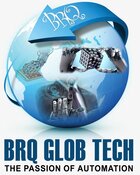Income Tax Audit Report Under Section 115JB Form 29B computing book profits for companies under Minimum Alternate Tax – MAT.
Form 29B & 29C: Audit Reports for Computing MAT and AMT under Income Tax Act
Income Tax Audit Report Under Section 115JB Form 29B computing book profits for companies under Minimum Alternate Tax – MAT.










Income Tax Audit Report Under Section 115JB Form 29B computing book profits for companies under Minimum Alternate Tax - MAT.
Summary: Section 115JB of the Income Tax Act, 1961 introduces the concept of Minimum Alternate Tax (MAT) to ensure that companies reporting high book profits but low taxable income due to deductions still contribute a minimum tax. MAT is levied at 15% (plus surcharge and cess) on a company’s book profits, defined as net profit under the Companies Act with specified adjustments. If tax under regular provisions is less than MAT, companies must pay tax under MAT. The difference between MAT and regular tax can be carried forward for 15 years as MAT credit. Companies liable under MAT must file Form 29B-an audit report certified by a Chartered Accountant-electronically with ITR-6, by the income tax return due date. This form validates the computation of book profit and MAT liability and ensures compliance.
Section 115JC introduces Alternate Minimum Tax (AMT) for non-corporate taxpayers such as individuals, HUFs, partnerships, LLPs, and AOPs who claim deductions under Chapter VI-A Part C or Section 10AA. These taxpayers must pay AMT at 18.5% (plus surcharge and cess) on adjusted total income if it exceeds regular tax liability. To comply, they must file Form 29C, an audit report certified by a Chartered Accountant. Deductions under Chapter VI-A Part C include sections like 80IA (infrastructure), 80IB (SMEs), 80IC (specified regions), 80JJA (biodegradable waste), and 80JJAA (employment generation), among others. These deductions aim to promote specific economic activities. Filing Form 29B or 29C is crucial for ensuring accurate tax liability under MAT or AMT. Non-filing can lead to disallowance of MAT/AMT credit, penalties, and tax scrutiny. Compliance helps maintain transparency and ensures minimum tax contributions from all eligible taxpayers.
Section 115JB of the Income Tax Act.
Section 115JB of the Income Tax Act, 1961, deals with Minimum Alternate Tax (MAT). This provision ensures that companies which show high profits in their books but pay little or no income tax (due to various exemptions/deductions) still contribute a minimum tax based on their book profits. It ensures that companies (especially those availing many exemptions and deductions) pay a minimum amount of tax to the government.
Why MAT
Some companies report high profits in their books but end up paying zero or very little income tax due to various incentives, exemptions, or deductions. MAT was introduced to bring such zero-tax companies into the tax net.
Under MAT, companies are liable to pay 15% (plus applicable surcharge and cess) on their book profits, even if their actual taxable income is lower or nil.
Applicability of MAT
MAT is applicable to:
- All companies (domestic and foreign)
- If the income tax payable under normal provisions is less than 15% of book profit
Legal Provision:
As per Section 115JB, if a company\'s normal income tax liability is less than 15% of the book profit, then the company must pay 15% of book profit (plus surcharge and cess) as Minimum Alternate Tax.
Current MAT Rate: 15% (plus applicable surcharge and cess)
Book Profit
Book Profit means the net profit as per the Profit and Loss Account (prepared under the Companies Act), adjusted by adding or deducting certain specified items like:
Book Profit = Net profit as per the Profit & Loss Account (prepared under Companies Act)
- Certain specified additions (e.g. income tax, provisions, deferred tax, etc.)
− Certain deductions (e.g. exempt income, depreciation as per books, brought forward losses, etc.)
The effective MAT rate is 15% (plus surcharge and cess) of the book profit.
MAT vs Normal Tax
A domestic company with the following details for FY 2023-24:
Particulars | Amount (₹) |
|---|---|
| Net profit as per books (P&L A/c) | ₹ 1,00,00,000 |
| Total income as per Income Tax provisions | ₹ 20,00,000 |
| Tax rate under normal provisions | 25% |
| MAT rate (as per Section 115JB) | 15% |
Tax Payable under Normal Provisions
Calculation | Amount (₹) |
|---|---|
| Income as per Income Tax | ₹ 20,00,000 |
| Tax @25% | ₹ 5,00,000 |
| Add: Cess @4% | ₹ 20,000 |
| Total Tax (Normal Provisions) | ₹ 5,20,000 |
Tax Payable under MAT Provisions
Calculation | Amount (₹) |
|---|---|
| Book Profit as per books | ₹ 1,00,00,000 |
| MAT @15% | ₹ 15,00,000 |
| Add: Cess @4% | ₹ 60,000 |
| Total MAT Payable | ₹ 15,60,000 |
Final Tax Liability (Higher of the Two)
Option | Tax Payable (₹) |
|---|---|
| Normal Tax | ₹ 5,20,000 |
| MAT | ₹ 15,60,000 |
| Tax Payable (Higher) | ₹ 15,60,000 |
So, the company must pay ₹ 15.60 lakh under MAT instead of ₹ 5.20 lakh under normal provisions.
MAT Credit
If a company pays MAT, the excess of MAT over normal tax can be carried forward for 15 years and set off in future years when regular tax becomes more than MAT.
Example:
- MAT paid: ₹15,90,000
- Normal tax: ₹5,00,000
- MAT Credit = ₹10,90,000
This MAT credit can be used in future years to reduce tax liability.
Exemptions from MAT
MAT is not applicable to:
- Companies opting for Section 115BAA / 115BAB (new tax regimes for domestic companies)
- Certain foreign companies (in cases where income is not liable to tax under DTAA)
Audit Report Form 29B
Form 29B is the prescribed audit report to be submitted by companies that are liable to pay tax under MAT provisions (Section 115JB). This audit report must be certified by a Chartered Accountant.
The form ensures that:
- Book profits are correctly computed as per Explanation 1 to Section 115JB(2).
- All adjustments to profit/loss as per Companies Act are properly reconciled.
- The company has correctly discharged MAT liability.
Applicability of Form 29B
Form 29B is applicable to:
- All companies (domestic or foreign) whose income is chargeable under MAT provisions of Section 115JB.
- Companies whose tax payable under regular provisions is less than 15% of book profits (MAT is triggered).
Not applicable to:
- Companies whose income is computed under special tax regimes such as Section 115BAA or 115BAB (unless MAT is still applicable in transitional cases).
Purpose of Form 29B
The main objectives of Form 29B are:
- To compute "book profit" as per MAT rules under Section 115JB.
- To ensure accurate adjustments (additions/deductions) to profits as per audited financial statements.
- To provide certification from a Chartered Accountant that the company has complied with MAT provisions.
- To help the Assessing Officer in verifying the correctness of MAT computation.
Key Points to Remember:
- Form 29B (audit report) is mandatory for companies paying MAT.
- MAT ensures minimum tax contribution from profit-making companies.
- MAT credit is a valuable asset for future tax planning.
- Always consult with your Chartered Accountant to optimize tax and MAT strategy.
Due Date for Filing Form 29B
- Form 29B must be electronically filed along with the company\'s Income Tax Return (ITR-6).
- The due date is the same as the ITR filing deadline for companies - generally 31st October of the assessment year (subject to extension).
Filing Process of Form 29B
- Preparation by Chartered Accountant:
- CA logs in via e-filing portal using their credentials.
- Prepares and verifies Form 29B based on audited books of accounts.
- CA logs in via e-filing portal using their credentials.
- Filing by Company:
- Company accepts the audit report filed by CA.
- The report is submitted electronically using the company’s Digital Signature Certificate (DSC).
- Company accepts the audit report filed by CA.
Consequences of Non-filing Form 29B
- Non-filing may lead to disallowance of MAT credit.
- May result in penalties or interest for shortfall in tax payment.
- Could attract notices or assessment scrutiny from the Income Tax Department.
Key Components of Form 29B
- Company details (Name, PAN, Financial Year)
- Details of Profit & Loss Account as per Companies Act
- Adjustments to profits (additions/deductions)
- Computation of Book Profit as per Section 115JB
- Details of MAT liability
- Certification by a Chartered Accountant
Key Points to Remember:
- Form 29B (audit report) is mandatory for companies paying MAT.
- MAT ensures minimum tax contribution from profit-making companies.
- MAT credit is a valuable asset for future tax planning.
- Always consult with your Chartered Accountant to optimize tax and MAT strategy.
Audit Report Form 29C
Income Tax Audit Report Under Section 115JB Form 29C for computing Adjusted Total Income applies to non-corporate taxpayers, including:
Income Tax Audit Report Under Section 115JC - Form 29C: Computation of Adjusted Total Income and Alternate Minimum Tax (AMT)
To bring more transparency and tax equity among non-corporate taxpayers availing large deductions under the Income Tax Act, the concept of Alternate Minimum Tax (AMT) was introduced under Section 115JC. This provision ensures that even entities enjoying significant deductions contribute a minimum level of tax. The Form 29C is the statutory audit report that must be filed by such taxpayers to certify the calculation of Adjusted Total Income and the AMT liability.
Section 115JC
Section 115JC of the Income Tax Act, 1961, applies to non-corporate taxpayers, including:
- Individuals,
- Hindu Undivided Families (HUFs),
- Partnership firms,
- Limited Liability Partnerships (LLPs),
- Association of Persons (AOPs),
- Body of Individuals (BOIs), etc.,
If they claim deductions under:
- Chapter VI-A Part C (Sections 80H to 80RRB), or
- Section 10AA (deduction for units in SEZs).
The section mandates the payment of AMT @ 18.5% (plus applicable surcharge and cess) on the Adjusted Total Income, if it exceeds the regular income tax liability.
Deductions available under Chapter VI-A Part C (Sections 80H to 80RRB)
deductions available under Chapter VI-A Part C (Sections 80H to 80RRB) of the Income Tax Act, 1961. These deductions are primarily meant to encourage certain types of economic activities, such as exports, infrastructure development, innovation, and employment generation.
Section 80IA
Purpose: Deduction for profits from infrastructure development, telecom, SEZs, power generation/distribution.
Benefit: Deduction of 100% of profits for 10 years (subject to conditions).
Applicable To: Industrial undertakings, SEZ developers, telecom services, etc.
Section 80IB
Purpose: Deduction for small and medium industries in manufacturing, housing, cold storage, etc.
Benefit: Up to 100% deduction for 5-10 years depending on type of business.
Applicable To: Housing projects, cold chains, etc.
Section 80IC
Purpose: Deduction for units in North-Eastern states, Himachal Pradesh, Uttarakhand.
Benefit: 100% deduction for first 5 years, 25% or 30% for next 5 years.
Status: Available only for eligible units established before cut-off dates.
Section 80ID
Purpose: Deduction for profits from hotels and convention centers in specified areas.
Benefit: 100% for 5 consecutive years.
Applicable To: New hotels and convention centers.
Section 80IE
Purpose: Deduction for new industrial undertakings in North-Eastern states.
Benefit: 100% deduction for 10 years.
Condition: Unit should begin operations between 01.04.2007 and 31.03.2017.
Section 80JJA
Purpose: Deduction for businesses collecting/processing biodegradable waste.
Benefit: 100% profit deduction for 5 assessment years.
Eligible Activities: Composting, bio-gas, bio-fertilizers, etc.
Section 80JJAA
Purpose: Deduction for additional employment generation.
Benefit: 30% of additional employee cost for 3 years.
Applicable To: All businesses (audited under Section 44AB).
Condition: Minimum employment conditions to be fulfilled.
Section 80LA
Purpose: Deduction for banks and financial institutions in International Financial Services Centres (IFSC).
Benefit: 100% of certain incomes for 5 years, then 50% for 5 years.
Applicable To: IFSC units registered with SEBI/IRDAI.
Section 80P
Purpose: Deduction for co-operative societies.
Benefit: 100% deduction on specified incomes (banking, agricultural produce, etc.).
Not Available To: Co-operative banks (after amendment).
Section 80PA
Purpose: Deduction for Producer Companies having turnover ≤ ₹100 crore.
Benefit: 100% of profits for 5 years.
Condition: Must be engaged in agri-based activities (procurement, marketing, etc.).
Section 80QQB
Purpose: Deduction for royalty income from books (other than textbooks).
Benefit: Up to ₹3,00,000.
Condition: Book must be published in India; author must be resident.
Section 80RRB
Purpose: Deduction for royalty from patents registered in India.
Benefit: Up to ₹3,00,000.
Condition: Patent must be registered under Indian Patents Act; inventor must be resident.
Important Notes:
- Many earlier export-related sections like 80H, 80HH, 80HHC, 80HHB have been phased out or withdrawn after the introduction of SEZ and other incentives.
- Deductions under these sections are subject to conditions, including audit reports, registration, and timelines.
- These are considered while computing AMT (Alternate Minimum Tax) and may require filing Form 29C if applicable.
Form 29C
Form 29C is the audit report under Section 115JC, issued by a Chartered Accountant, certifying the calculation of:
- Adjusted Total Income,
- Alternate Minimum Tax (AMT),
- Deductions claimed under eligible sections.
It is a mandatory requirement to ensure compliance and correctness in the AMT calculation by taxpayers claiming high deductions.
Purpose of Filing Form 29C
- To determine the correct Adjusted Total Income after adding back specified deductions.
- To calculate and report the Alternate Minimum Tax (AMT) liability.
- To certify the eligibility of the deductions and the method of computation as per law.
- To ensure minimum tax payment by high-deduction availing taxpayers.
Applicability of Form 29C
Form 29C must be filed by non-corporate taxpayers if:
- Adjusted Total Income exceeds ₹20 lakhs, and
- They claim deductions under:
- Section 10AA, or
- Chapter VI-A (Part C) such as Section 80-IA, 80-IAB, 80-IB, 80-IC, 80-IE, 80JJAA, 80LA, etc.
- Section 10AA, or
Note: Corporate taxpayers are covered under MAT (Minimum Alternate Tax) under Section 115JB, not AMT.
Computation of Adjusted Total Income (ATI)
The Adjusted Total Income is computed as:
ATI = Total Income (before AMT provisions) + Deductions claimed under Section 10AA and Chapter VI-A (Part C)
Once ATI is computed, AMT is calculated as:
AMT = 18.5% of ATI + Surcharge + Health & Education Cess
If this amount is higher than the regular tax, then AMT becomes payable.
example to understand AMT (Alternate Minimum Tax) under Section 115JC to 115JF of the Income Tax Act, applicable mainly to non-corporate taxpayers (like LLPs, individuals, HUFs, AOPs, etc.) who claim certain deductions under Chapter VI-A or Section 10AA.
Example: AMT vs Regular Tax - LLP Case
Taxpayer: ABC LLP
Assessment Year: 2024-25
Total Income before deductions (as per normal provisions): ₹60,00,000
Deduction claimed under Section 10AA: ₹30,00,000
Taxable Income after deduction = ₹30,00,000
Step 1: Calculate Regular Tax
Tax on ₹30,00,000 (as per slab for LLPs @30%) = ₹9,00,000
Add Cess @ 4% = ₹36,000
Total Tax = ₹9,36,000
Step 2: Calculate AMT (Alternate Minimum Tax)
Adjusted Total Income = Total income before deduction = ₹60,00,000
AMT rate = 18.5%
Tax = 18.5% of ₹60,00,000 = ₹11,10,000
Add Cess @ 4% = ₹44,400
Total AMT Payable = ₹11,54,400
Step 3: Compare
Tax Type | Amount Payable |
|---|---|
| Regular Tax | ₹9,36,000 |
| AMT | ₹11,54,400 |
Since AMT is higher, the LLP must pay ₹11,54,400.
Example: AMT Applicability for an Individual
Assessee: Mr. Rajesh
Assessment Year: 2024-25
Age: 45 years (not a senior citizen)
Total income before deduction: ₹45,00,000
Deduction claimed under Section 80-QQB (royalty on books): ₹20,00,000
Taxable income after deduction: ₹25,00,000
Step 1: Calculate Regular Tax
Income = ₹25,00,000
- ₹2,50,000 to ₹5,00,000 @ 5% = ₹12,500
- ₹5,00,001 to ₹10,00,000 @ 20% = ₹1,00,000
- ₹10,00,001 to ₹25,00,000 @ 30% = ₹4,50,000
Total = ₹5,62,500 - Health & Education Cess @ 4% = ₹22,500
Regular Tax = ₹5,85,000
Step 2: Calculate AMT
Since Mr. Rajesh claimed deduction under Section 80QQB, AMT provisions apply.
Adjusted Total Income = ₹45,00,000
AMT Rate = 18.5%
Tax = ₹8,32,500
- Cess @ 4% = ₹33,300
AMT Payable = ₹8,65,800
Step 3: Compare
Type of Tax | Amount |
|---|---|
| Regular Tax | ₹5,85,000 |
| AMT Payable | ₹8,65,800 |
Since AMT is higher, Mr. Rajesh must pay ₹8,65,800 as tax.
AMT Credit:
The excess of AMT over regular tax (₹2,18,400) can be carried forward for up to 15 assessment years, and adjusted when regular income tax exceeds AMT in future.
Due Date for Filing Form 29C
Form 29C must be:
- Filed electronically, and
- Submitted on or before the due date of filing the Income Tax Return under Section 139(1), i.e., 31st October of the assessment year (for audit cases).
Consequences of Non-Compliance
Failure to file Form 29C may result in:
- Disallowance of deductions under Section 10AA or Chapter VI-A,
- Additional tax liability,
- Penalty under Section 271J for incorrect certification,
- Notices and assessments under scrutiny.
Conclusion
Form 29C is a vital audit certification for non-corporate taxpayers availing significant deductions and Form 29B a vital audit certification for corporate taxpayers availing significant deductions. It ensures compliance with Section 115JB & Section 115JB provisions and prevents tax avoidance through excessive deduction claims. Filing this form accurately and within time is essential to avoid penalties and secure eligibility for deductions under the Income Tax Act.
DISCLAIMER:-
(Note: Information compiled above is based on my understanding and review. Any suggestions to improve above information are welcome with folded hands, with appreciation in advance. All readers are requested to form their considered views based on their own study before deciding conclusively in the matter. Team BRQ ASSOCIATES & Author disclaim all liability in respect to actions taken or not taken based on any or all the contents of this article to the fullest extent permitted by law. Do not act or refrain from acting upon this information without seeking professional legal counsel.)
In case if you have any query or require more information please feel free to revert us anytime. Feedbacks are invited at brqgst@gmail.com or contact at 9633181898 or via WhatsApp at 9633181898.

Featured Posts
- Income Tax Computation For Individuals: Rules And Rates
- New RCM for Indian Exporters from 01/10/23: Place of Supply Changes
- Who will be considered as the owner of the goods
- Unregistered persons can enroll now in GST for supply of goods through e-commerce operators.
- GSTN Simplified Integration for E-commerce Operators with Unregistered Suppliers who wish supply through E-commerce Operators


Latest Posts
- GST Simplified – 56th Council Meeting Brings Two-Tier Structure & Trade Relief
- Madras High Court Declares GST Notification 56/2023 Illegal – What Taxpayers & Consultants Must Know
- Section 129 Penalty Cannot Be Imposed Merely for Misclassification of Goods: A Landmark Judgment
- Advisory for Taxpayers: New Security Enhancements in GST System
- Advisory On GSTR-3A Notices

Popular Posts
- Income Tax Computation For Individuals: Rules And Rates
- New RCM for Indian Exporters from 01/10/23: Place of Supply Changes
- Who will be considered as the owner of the goods
- Unregistered persons can enroll now in GST for supply of goods through e-commerce operators.
- GSTN Simplified Integration for E-commerce Operators with Unregistered Suppliers who wish supply through E-commerce Operators




 BRQ GLOB TECH
BRQ GLOB TECH
